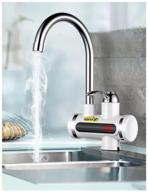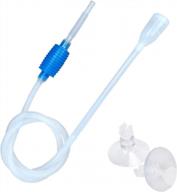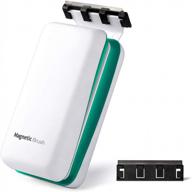
Review on 🐠 Penn-Plax 75-Watt Fully Submersible Aquarium Heater: Precise 1 Degree Accuracy - Ideal for Up to 15 Gallon Tanks by Tori Williams

Read This Before Buying a Heater
Every heater is randomly tested for quality control. Read Revain 1 and 2 star rating before you buy, check out the pictures posted by real users and you will get real picture. In the end, I learned the following important things: 1) Metal heaters wrapped in plastic are much more accurate (Neotherm, Aqueon Pro, etc.), but they have their own problems. Metal expands a lot more when heated than plastic, which is why many users end up posting photos of heaters bursting/burning, fish boiling, etc. But they are pretty accurate (maintain the same temperature in the tank regardless of the room temperature). ) before they explode. 2) A glass heater using physical thermostats is not accurate but probably safer. Set the heating to 78F if your room is 60F. Your aquarium will be at a constant 78F for SO LONG as your room temperature stays at a constant 60F. When the RT rises to 80, the mechanical thermostat raises your tank to about 82F. Approximately 2F to 4F for every 10F increase in room temperature. If your room temperature drops to 50°F, your tank temperature will also drop 2°F to 4°F. This is because a mechanical thermostat relies on the expansion/contraction of a physical switch, which responds differently depending on the temperature range. This is hit and miss at best. For Betta, paddy field temperatures can soar to 88°F at midday and drop to 78°F at night, albeit gradually. Betta farms in Asia do not have heaters. You must survive with this option. So your betta tank should be fine. But for delicate marine fish and coral, you need precision heaters that can eventually rupture. The safety of mechanical thermostats is that they usually fail in the "off" position. Your heater is dying and your tank is cold and not boiling. C) Glass heaters with IC thermostats are available. They may be more accurate, but if they fail, your heater may be in the 'on' or 'off' position. If it's always on, your tank is boiling. D) Ignore what manufacturers say about how many watts you need to heat a 5g or 20g tank. That's simple physics. 50W is not enough to heat a 5g tank to 78°F when your room is 50°F. Physics requires you to calculate how many degrees you need to increase the temperature based on the ambient temperature, NOT just the size of your tank. Your heater may not be efficient so your 50 watt heater may only give you 40 watts in real life. So can a 100w heater boil your 5g tank? Think about it. Your small car usually has a 100 hp engine. How can a Ferrari with a 600 hp engine crash into a tree as soon as you step on the accelerator? Find out and you have the answer. Again, 50W won't heat your 5g tank from 50F to 78F. Expect 50W to raise temperatures no more than 15°F for a 5g tank and google how to calculate using room temperature and not just tank size. A 200w heater will stop heating after it reaches 78F in a 5g tank if the thermostat is working, but an always on faulty thermostat will boil your tank even if it's only 50w . When your room is cold, you need overpower, not underpower. E) Humans have landed on the moon, but a safe heater for aquariums has not yet been invented. Glass heaters will shatter if you change the water without turning them off, but other than that, glass is perfectly safe (think your lightbulbs). But precision heaters are just those that burst over time. In the end, there is no ideal option yet.
- Certified
- Hard to Tell
New products
Comments (0)
Top products in 🐟 Aquarium Heaters & Chillers

Hardy Leaf Black Forest Asian Java Fern Potted Live Water Aquatic Aquarium Plants For Freshwater Fish Tank By Greenpro Microsorum Pteropus

39 Review

Accumulative electric water heater Thermex Ceramik 50 V, white

11 Review

Faucet water heater with display

13 Review

🐠 Fluval E300 Electronic Heater - 300W Advanced Aquarium Heater for Tanks up to 100 Gallons (A774)

9 Review
Another interesting products

🧲 Efficient Magnetic Fish Tank Cleaner: KEDSUM Floating Clean Brush with Handle Design

34 Review

Jasonwell Magnetic Aquarium Fish Tank Glass Algae Cleaner - Floating Brush (L Size)

37 Review

🐠 U-BCOO Aquarium Gravel Cleaner Fish Tank: Manual Siphon for Efficient Filter Gravel Cleaning and Water Change in Tanks

22 Review

Efficient 2-In-1 Magnetic Fish Tank Cleaner With Non-Slip Design And Scratch-Free Blades

37 Review

